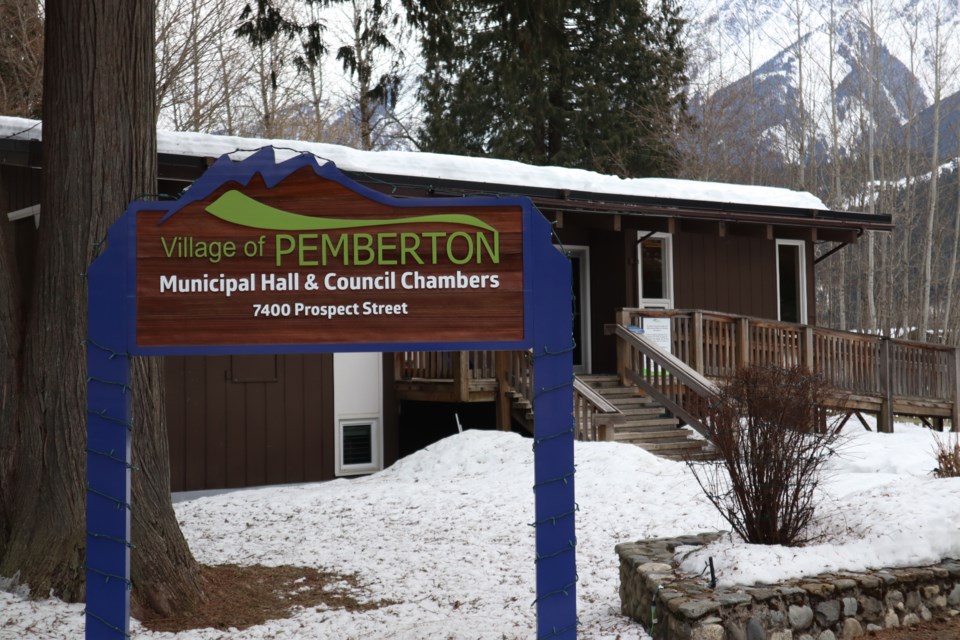New provincial fire safety standards will mean changes to Pemberton's fire service—and more costs to the community, council heard at its Feb. 11 meeting.
The Village of Pemberton's (VOP) mayor and council heard from fire chief Cameron Adams at the meeting, who shared how Pemberton Fire Rescue might adapt to the new standards set out in the 2024 B.C. Fire Safety Act, which places more responsibility on local authorities to conduct fire inspections and increases penalties for violations.
“It's going to increase our inspections massively that we need to comply with,” Adams told council.
To improve fire safety and align with the new provincial standard, Adams proposes new training for staff, establishing a fee structure to offset administrative costs of inspections, a communications plan to inform the community of the Act’s requirements, hiring a dedicated fire prevention officer, and ensuring “clear lines of communication with provincial agencies,” according to a report to council.
“We all have been falling behind and noticing for sure that there is some non-compliance through public buildings with the fire code,” Adams said. “As of recently, it's becoming more and more apparent that we have been lacking in these inspections throughout the years, essentially [because] our priorities have been lying elsewhere for the services we provide.”
Inspections target fire-safety issues such as safety lighting, fire extinguishers, alarm panels and fire escape doors. As of Feb. 11, 148 inspections were waiting, but Adams expects that figure to rise due to new construction.
"Inevitably, this is going to result in more costs for the community," said Mayor Mike Richman, of the new fire safety officer. "As this [cost] download comes up, we're looking at a resolution for financial support from the province, especially for smaller communities, to cover some of these costs."
Council motioned to have staff develop a fee structure for fire safety inspections to help defray the cost of the added position to the fire department.
Council heard from Adams again on a separate fire report at the Feb. 11 meeting, which found Pemberton Fire Rescue responded to 436 incidents in 2024—up 16 per cent from 2023.
Moving forward with infill housing
The VOP also received an update on the first of eight initiatives under the Housing Accelerator Fund, which awarded the municipality $2.7 million in grant funding to remove barriers and speed up the construction of 98 new housing units over the next two years, and nearly 1,995 homes across the community over the next decade.
Mayor and council previously voted to approve a bylaw amendment allowing up to four dwelling units in typical family neighbourhoods, also referred to as small-scale multi-unit housing (SSMUH), at its Dec. 10 meeting. During the Feb. 11 meeting, staff presented a report to council on four ways to kick-start those SSMUH projects.
“A big piece of this is capacity-building, so education, awareness and providing the tools for the individual property owner to find a use for their property," said planner Colin Brown. "[People] might be sitting there saying, ‘I want to do something with my property, but have no idea where to start,' and the idea stops right there.”
Brown envisions an interactive “website or portal” with guiding questions that will help inform residents of potential building options and available grants.
The Village will also offer a pre-reviewed housing designs catalogue, “created by architects and pre-reviewed by village staff for compliance with all applicable regulations” to streamline construction once approved, according to a staff report.
Currently, VOP bylaws require that bylaw amendments aimed at land use changes, or variances, be considered by council. But a 2022 update to the Local Government Act enables “local governments to define minor variances and to delegate approval of minor variances to staff,” which the VOP suggests could accelerate the approval of new housing units.
“So once we define what a minor variance is, we'll come up with a set of criteria for staff to be able to evaluate these applications, with the idea that applications should fit this criteria to be delegated to staff," said Brown. "If they don't, then [the application] comes back to council.”
The last front addresses a disparity between the Village's adherence to the BC Energy Step Code—a provincial set of standards for constructing energy-efficient buildings to reduce energy use and meet climate goals. The Village of Pemberton uses Step 4 of the code, which demands new construction be 40 per cent more energy efficient than a baseline reference house, while the provincial standard is Step 3 (20 per cent more energy efficient than the baseline).
“The costs related to [a Step 3 code] could raise the cost by 20 or 30 per cent of the cost of construction,” Brown told council. “And so this incentive would be to relax the Step Code back to Step 3, and it would be temporary until 2027 when the province is all scheduled to go up to Step 4.
“So it's an opportunity for a couple of years anyways, to potentially lower that cost of construction as an incentive.”
Brown noted it would be a trade-off; easing energy efficiency guidelines would make the construction of new housing less expensive and therefore help the Village meet its targets under the HAF, but also make it more difficult for the VOP to meet its climate targets.
Council motioned to have staff develop a report defining minor variances for infill housing developments.




